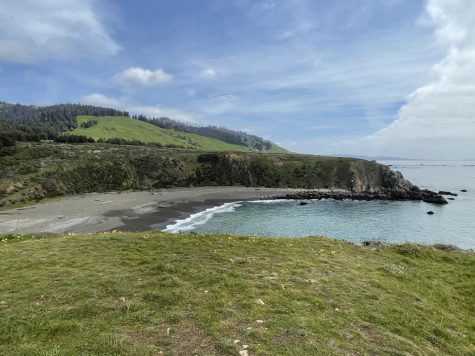Students return to traveling despite pandemic
April 21, 2021

As seniors visit college campuses in-person and families make plans for summer vacation, Palo Alto High School students are increasingly traveling away from home despite the pandemic, a trend exemplified by their spring break experiences.
With restrictions within the country continuing to loosen, many Paly students adapted their spring break vacation plans for the COVID-19 era.
One student who modified her travel arrangements is sophomore Victoria Senderzon, who went to Oregon and Washington over the break by plane before driving throughout the region.
Senderzon said she was concerned about flying, particularly given her fears of navigating a more restrictive and high stakes travel experience. She said she noticed travelers removing their masks, which worried her given the compact nature of the airplane.
“Fly[ing] there was really interesting because I haven’t flown in over a year, and I was honestly really surprised at how packed the plane was,” Senderzon said. “Some people did take off their masks because the plane still serves drinks. I did not, and it made me a little bit uncomfortable when other people did, but I can’t control others.”
Similar to Senderzon, junior Lily Lochhead flew to Wisconsin over spring break, which she said was very different from her experience flying on a plane earlier in the pandemic.
“Last summer they had social distancing, everyone had a row to themselves,” Lochhead said. “And now they’ve kind of changed that so people were right next to each other. It was a full flight, but I think that they did have good precautions.”
Unlike Senderzon and Lochhead, sophomore Anna Maloney said she and her family stayed at home, taking walks with family and talking to friends.
“With teenagers at the moment, we’re not all getting vaccinated so we have to be careful with social distancing and that kind of stuff,” Maloney said. “So when we visited a friend it was across the street from each other and we would talk over the phone.”
Maloney said that she tried to avoid technology during her time off, focusing instead on other leisure activities.
“It [spring break] was just kind of staying off of the whole online circuit, which was the big change,” Maloney said. “Usually we travel and we are on our phones a lot, and this year it was a lot of reading and baking.”
Maloney said that despite her lack of travel compared to last year, she was able to enjoy the time at home considerably more.
“By spring break last year my family was already kind of in lockdown,” she said. “We were staying at home even more than we were this last break, and I didn’t really see any friends or anything unless it was online. So it [spring break] has kind of opened up more for us at this point.”
Empathizing with those eager to get away from their homes, Maloney said she believes that the increase in travel is ultimately acceptable as long as people remain cautious.
“I think that this last year has been really hard for a lot of people,” Maloney said. “I know I miss traveling and seeing a bunch of my family members so I don’t blame anyone [for traveling] who’s been vaccinated or taking precautions … hopefully everything will be safe when opening up. I do worry of course that if people aren’t taking precautions, it could lead to a surge again but I think it [traveling] is a personal choice.”
In regards to domestic travel, the Center for Disease Control recommends that travelers who are not fully vaccinated get tested one to three days before their trip, wear a mask over their nose and mouth (This is required in many forms of public transportation including planes and trains), avoid crowded places, stay six feet apart from those who they are not traveling with, and wash their hands often.
According to the CDC, those who are fully vaccinated do not need to get tested for COVID-19 before traveling. Fully vaccinated individuals constitute those who received their second shot of a two-dose vaccine (Pfizer or Moderna) or their first shot of a one-dose vaccine (Johnson & Johnson) at least two weeks prior to their trip.

